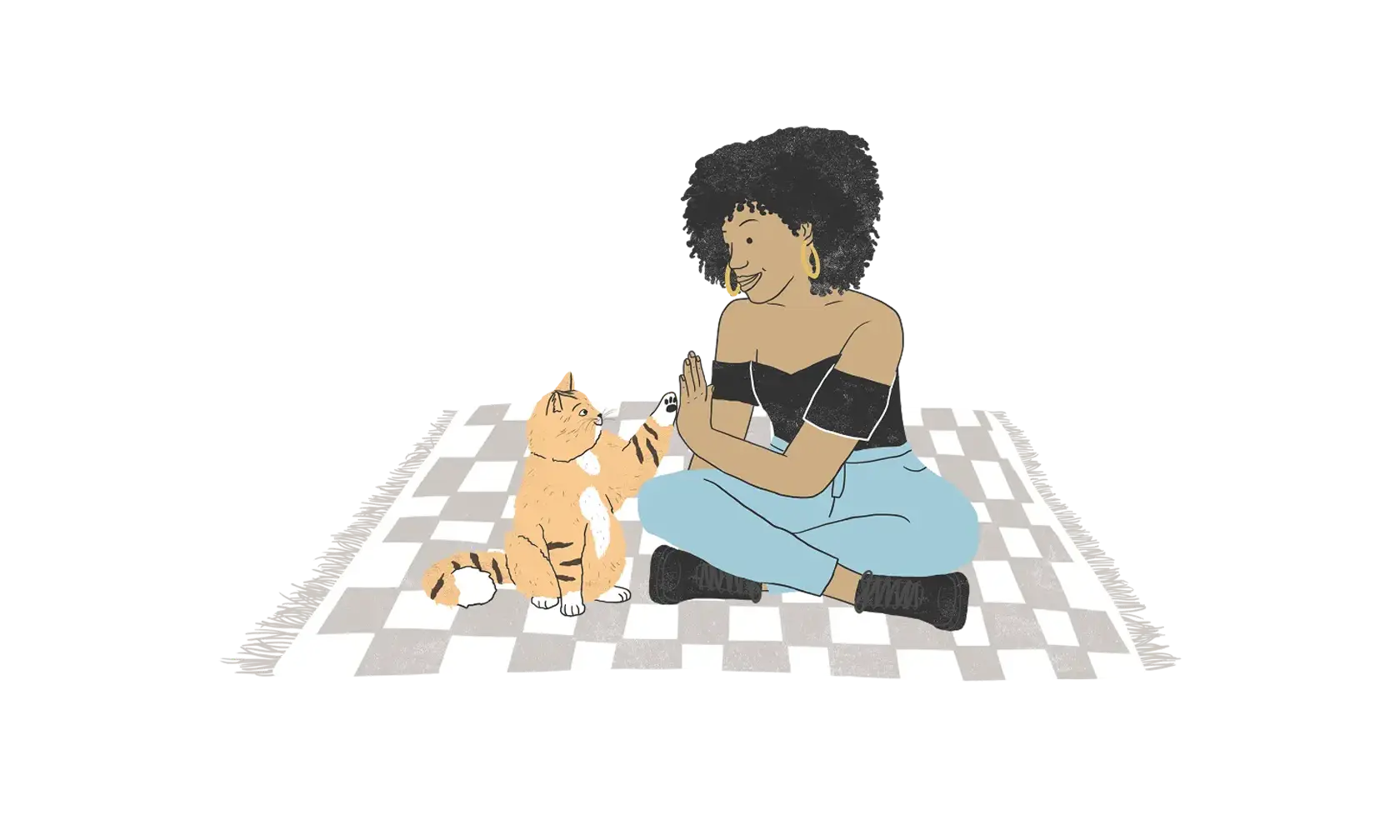Panting is something we often associate with dogs. But what about cats? Panting in cats can be a sign of a serious disease or an emergency and you should call your veterinarian if you see your cat panting. Here’s what cat panting looks like and what causes it.
What Does Cat Panting Look Like?
The physical signs of a cat panting include:
- Open mouth
- Tongue hanging part of the way out
- Small, shallow breaths
Why Do Cats Pant?
There are various reasons your cat may pant. Keep in mind it can be a very serious sign or even a medical emergency. Understanding the most common causes of cat panting will help you recognize when it’s time to seek veterinary care.
Giving Birth
At the start of labor, cats will generally pant since they are anxious, stressed, overheated, and feeling pain. Once they have finished giving birth to their kittens and have the chance to rest and calm down, the panting should stop. If they continue panting, contact a veterinarian to have them evaluated for a possible retained kitten that hasn’t delivered naturally.
High Temperatures
Panting helps cats regulate their body temperature. If you suspect your cat is panting from being overly warm, bring them to a dark, cool place and be sure they drink plenty of water. They should stop panting once they begin to cool down and relax. If not, monitor them for signs of heatstroke (difficulty breathing, restlessness, vomiting, lethargy, muscle tremors). If you see any of these signs, take your cat to the veterinarian immediately.
Fear or Stress
If you’re aware of triggers that cause your cat fear or stress, do your best to avoid them. If your cat is triggered and begins panting, separate them from the trigger, and give them time to relax and calm down. Young cats may pant easier than older cats with stress and excitement. If they continue to pan, contact your veterinarian.
Is it Normal for a Cat to Pant?
There are times when panting may indicate a serious underlying issue. If you notice your cat is panting, it can be a cause for concern. Contact a veterinarian immediately if the panting is accompanied by any of the following signs:
- Rapid or difficulty breathing
- Panting that becomes loud or raspy
- Lethargy
- Loss of appetite
- Change in behavior, like hiding or aggression
- Change in gum color going from pink to white or blue-tinged
- Wheezing
There are many serious medical issues that can cause your cat to pant.
Respiratory Diseases
Cats will pant due to many respiratory illnesses, respiratory diseases, such as asthma, and infections. Symptoms, such as stuffy nose, coughing, wheezing, and inflammation, can make breathing difficult for your cat and cause panting. If you notice panting in addition to these symptoms, your cat needs to be evaluated by a veterinarian. Seek emergency medical care if your cat is in severe distress or is struggling to breathe.
Anemia
Anemia is caused when there aren’t enough healthy red blood cells in the body. Anemia can result in are increased heart and respiratory rates, weakness, and pale gums. If you notice these signs in addition to your cat panting, seek veterinary care immediately.
Pain
While cats may be masters at hiding their pain, panting is one sign of it. If you suspect your cat is in pain and you notice changes in behavior, mobility, eating, or increased vocalization, seek veterinary care immediately.
Heart Disease
As heart disease progresses, fluid can build up around the heart and lungs, decreasing lung capacity and restricting oxygen levels or the heart muscle may not be pumping blood normally. It can happen in older cats with acquired heart disease or in a young cat with congenital heart disease. When this occurs, breathing becomes difficult, and cats may pant. Additionally, the later stages of heart disease can be painful, which also causes panting. If you know your cat has a heart condition and they begin panting, seek immediate veterinary care because the situation can become critical quickly.
Poisoning
A cat’s respiratory system can be affected by the toxic effects of certain drugs, food, and plants. If they come into contact with these toxins, they may suffer respiratory distress and pant excessively. Contact a veterinarian immediately if you notice your cat panting excessively or are aware of toxic exposure.
Diaphragmatic Hernia
When cats suffer from a diaphragmatic hernia, the abdominal organs and tissue move into the chest cavity. This prevents their lungs from properly expanding, causing them to pant and gasp for air. This is a critical situation and requires emergency veterinary care and surgery.
Foreign Body
If a foreign object is swallowed or inhaled, it can become lodged in your cat’s airways resulting in panting. This is an emergency that requires immediate veterinary care.
Always remember, while cats can pant, it isn’t common. Any panting that lasts longer than five minutes or is accompanied by other symptoms requires prompt veterinary care.
ZPC-02553



